Table of Contents
Are you ready to step into the ring of the ultimate weight dilemma? Brace yourself because we’re about to unravel the mysteries surrounding one of the most critical questions in the world of combat sports: How much does a punching bag weigh?
We’ve interviewed an extraordinary lineup of punching bag aficionados, seasoned professionals, and weight whisperers who are itching to reveal the jaw-dropping truths behind the perplexing weight dilemma that has baffled the boxing community for decades.
Get your gloves on and your curiosity in gear because we’re about to uncover the juiciest secrets about how much those beefy punching bags really weigh.
It’s time to separate the heavy hitters from the featherweights and discover the hidden truths behind the perfect punching bag weight.
So, grab a protein shake, find a comfy spot, and get ready to have your mind blown by our expert panel. Are you ready to rumble? Let’s get this weighty party started!
How Much Does a Punching Bag Weigh According to Their Type
| Punching Bag Type | Description | Typical Weight Range | Factors Affecting Weight |
| Heavy Bag | Designed for power punches | 70 – 150 pounds | – Skill level and training goals |
| – Available space and mounting requirements | |||
| – Material density and filling | |||
| – Desired resistance and workout intensity | |||
| Speed Bag | Enhances hand speed | 5 – 12 pounds | – Skill level and training goals |
| – Available space and mounting requirements | |||
| – Desired rebound speed and responsiveness | |||
| Muay Thai Bag | Suitable for kickboxing and strikes | 100 – 200 pounds | – Skill level and training goals |
| – Available space and mounting requirements | |||
| – Desired resistance for powerful strikes | |||
| Uppercut Bag | Focuses on uppercut punches | 30 –60 pounds | – Skill level and training goals |
| – Available space and mounting requirements | |||
| – Desired positioning for effective uppercuts |
1. Heavy Bag
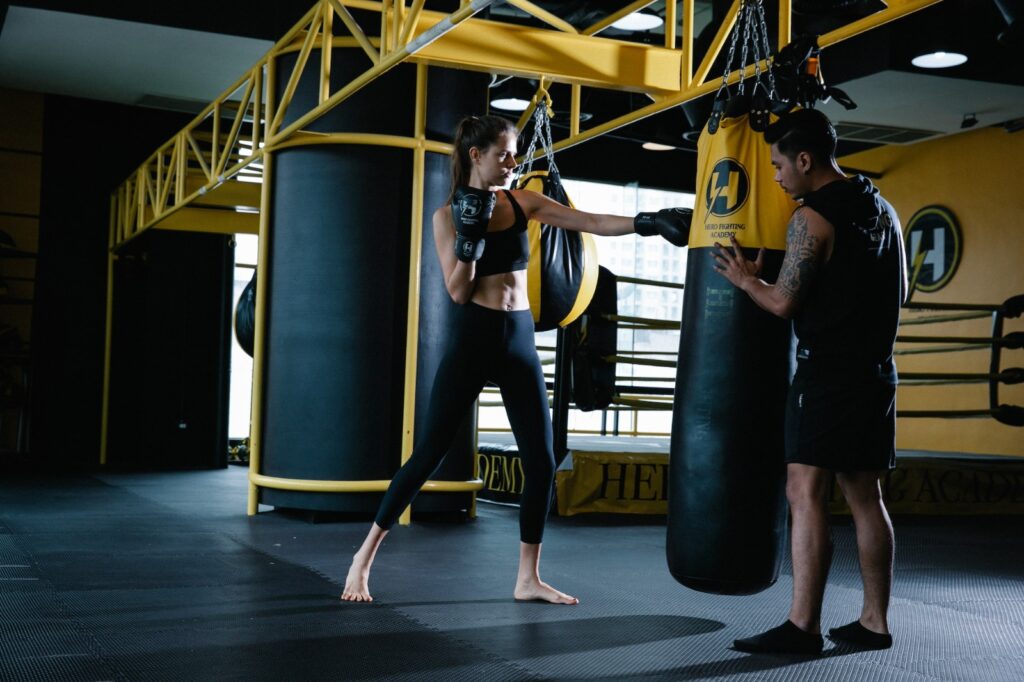
When it comes to training and building strength, the heavy bag is a classic choice. This type of punching bag is typically cylindrical in shape, made from durable materials such as leather or synthetic materials, and filled with various materials like fabric, sand, or shredded textiles.
Its primary purpose is to provide a target for practicing powerful punches and strikes, allowing fighters to develop strength, technique, and endurance.
– Typical Weight Range for Heavy Bags
Heavy bags come in different weights to cater to various training needs. The weight of a heavy bag can range anywhere from 70 pounds (32 kg) to as heavy as 150 pounds (68 kg) or even more.
The specific weight you choose depends on your training goals, experience level, and physical capabilities. Beginners often start with lighter bags, gradually progressing to heavier ones as they build strength and improve their technique.
– Factors Affecting the Weight of Heavy Bags
The weight of a heavy bag is influenced by several factors, including:
a. Training Goals:
If you’re looking to primarily build strength and power, a heavier bag will provide more resistance. On the other hand, if your focus is on speed and precision, a lighter bag may be more suitable.
b. User’s Weight and Strength:
A heavier bag may be appropriate for individuals with greater body weight and strength, as they can better handle the impact and maintain control during training sessions. Conversely, lighter individuals may find a lighter bag more manageable.
c. Skill Level:
Beginners often start with lighter bags to develop technique and avoid potential injuries. As their skills progress, they can gradually move up to heavier bags.
2. Speed Bag
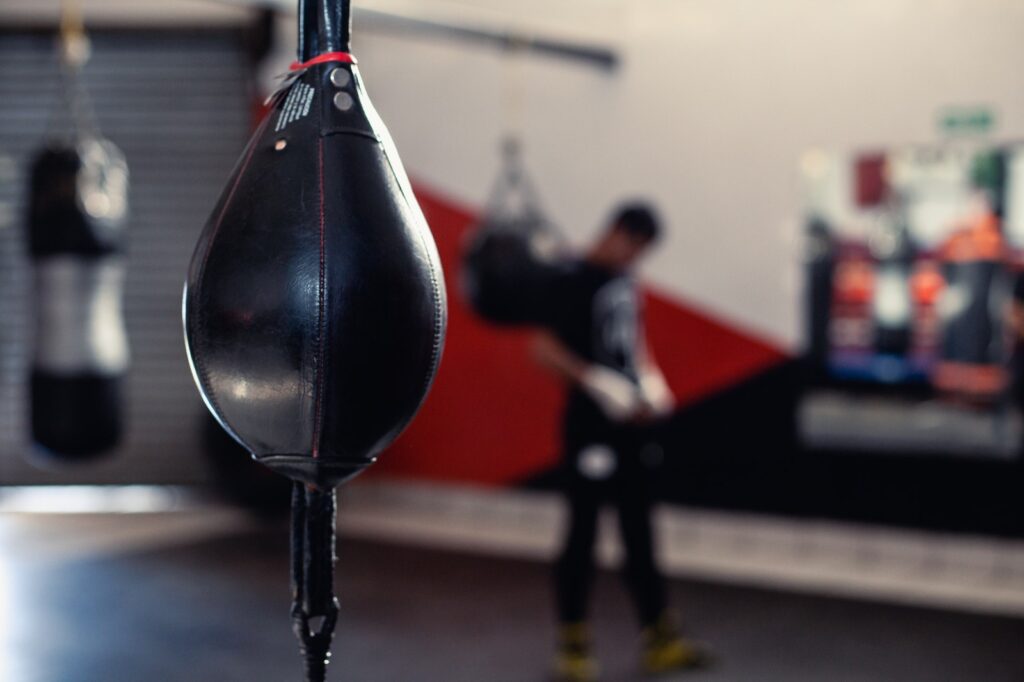
The speed bag, also known as the speedball, is a small, air-filled bag attached to a swivel platform or ceiling-mounted platform.
It is designed to improve hand-eye coordination, rhythm, timing, and speed. The speed bag is an excellent tool for boxers, martial artists, and fitness enthusiasts seeking to enhance their punching accuracy and reflexes.
– Typical Weight Range for Speed Bags
Speed bags are generally lightweight compared to heavy bags. They typically weigh between 5 pounds (2.3 kg) and 12 pounds (5.4 kg).
The lighter weight allows the bag to rebound quickly, encouraging rapid punches and continuous movement.
– Factors Affecting the Weight of Speed Bags
The weight of a speed bag is influenced by the following factors:
a. User’s Skill Level:
Beginners may prefer a slightly heavier speed bag as it provides more stability and a slower rebound, making it easier to develop the necessary timing and coordination. Advanced users often opt for lighter bags to challenge their reflexes and speed.
b. Training Objectives:
If your focus is on building speed, a lighter speed bag can help increase your hand speed. Conversely, if you aim to improve accuracy and timing, a slightly heavier bag may be more appropriate.
3. Muay Thai Bag

The Muay Thai bag, also known as a banana bag or a long bag, is specifically designed for Muay Thai training and striking techniques. It is longer and cylindrical, resembling the shape of a banana, hence the nickname.
The Muay Thai bag allows practitioners to simulate strikes on different parts of the body, including low kicks, knees, and elbows, enabling them to develop power, accuracy, and conditioning.
– Typical Weight Range for Muay Thai Bags
Muay Thai bags are typically heavier than traditional heavy bags, providing a greater resistance for powerful strikes. The weight range for Muay Thai bags can vary between 100 pounds (45 kg) and 200 pounds (90kg).
– Factors Affecting the Weight of Muay Thai Bags
The weight of a Muay Thai bag can be influenced by the following factors:
a. User’s Weight and Strength:
Heavier bags are generally suitable for individuals with greater body weight and strength, allowing them to execute powerful strikes with control.
b. Training Focus:
If your training primarily focuses on developing power and conditioning for Muay Thai techniques, a heavier bag can provide the necessary resistance. However, if your focus is on speed and precision, a slightly lighter bag may be more appropriate.
4. Uppercut Bag
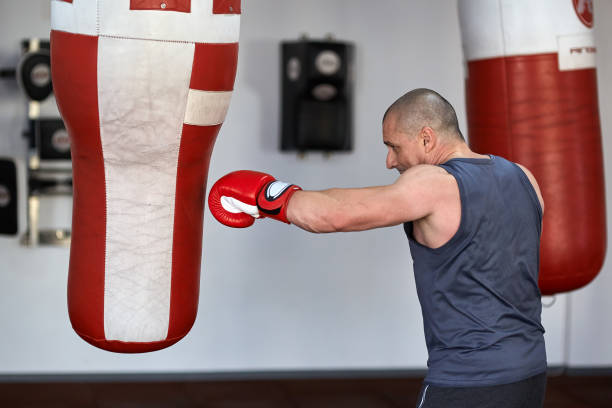
The uppercut bag, also known as a angle bag or body bag, is designed to simulate a human body’s torso and head. Its shape is usually cylindrical, wider at the top to represent the head and narrowing down towards the bottom to mimic the torso.
The uppercut bag is primarily used for practicing uppercut punches, hooks, and body shots, allowing fighters to develop power, accuracy, and technique for close-range combat.
– Typical Weight Range for Uppercut Bags
Uppercut bags are typically lighter compared to heavy bags and Muay Thai bags due to their smaller size and focus on specific punching techniques. The weight range for uppercut bags typically falls between 30 pounds (14 kg) and 60 pounds (27 kg).
– Factors Affecting the Weight of Uppercut Bags
The weight of an uppercut bag can be influenced by the following factors:
a. Training Goals:
If you primarily want to focus on practicing uppercut punches and hooks, a lighter bag may be suitable to allow for greater speed and precision.
However, if you also want to incorporate body shots and simulate close-range combat, a slightly heavier bag can provide the necessary resistance.
b. User’s Strength and Experience:
Beginners may benefit from lighter bags to develop proper technique, while more experienced fighters can opt for heavier bags to challenge their power and accuracy.
Considerations Regarding the Weight of a Punching Bag
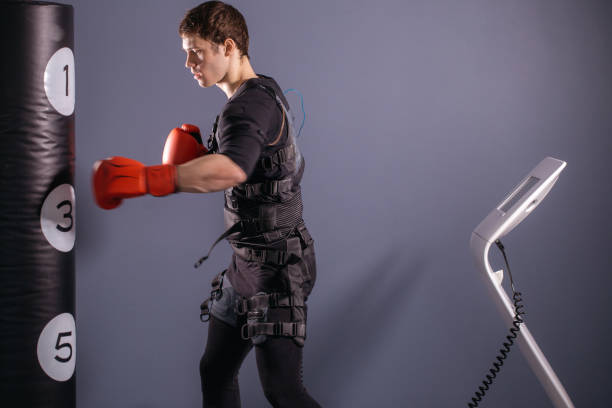
Manufacturer Specifications
– Importance of Checking the Manufacturer’s Information
When it comes to finding out the weight of a punching bag, one of the most reliable sources of information is the manufacturer’s specifications.
Manufacturers provide accurate details about their products, including the weight, to help users make informed decisions. It’s crucial to check this information as it ensures you select a bag that suits your training needs and abilities.
– How to Find Weight Information on Punching Bags
To locate the weight information on a punching bag, you can refer to the product label or tag attached to the bag. It’s often placed in a visible location, such as near the bottom or on the packaging.
The weight may be listed in pounds (lbs) or kilograms (kg), depending on the country and manufacturer.
Common Weight Ranges
Overview of Typical Weight Ranges for Different Types of Bags
Here’s a breakdown of the typical weight ranges for different types of punching bags:
Heavy Bag: 70 pounds (32 kg) to 150+ pounds (68+ kg)
Speed Bag: 5 pounds (2.3 kg) to 12 pounds (5.4 kg)
Muay Thai Bag: 100 pounds (45 kg) to 200 pounds (90kg)
Uppercut Bag: 30 pounds (14 kg) to 60 pounds (27 kg)
These weight ranges provide a general idea of what to expect, but it’s important to note that there can be variations within each category.
– Factors to Consider When Choosing the Appropriate Weight
When selecting the weight of a punching bag, consider the following factors:
a. Training Goals:
Determine whether you want to focus on building strength and power or improving speed and accuracy. Heavier bags provide more resistance for strength training, while lighter bags allow for faster movements.
b. Experience Level:
Beginners usually start with lighter bags to develop proper technique and avoid strain. Advanced users may opt for heavier bags to challenge themselves.
c. Body Weight and Strength:
Individuals with greater body weight and strength can handle heavier bags more effectively. Consider your own physical capabilities to choose an appropriate weight.
Weight Conversion
– Conversion Between Different Units of Weight (Pounds, Kilograms)
Weight measurements are often provided in pounds (lbs) or kilograms (kg). If you come across a weight measurement in a unit you’re less familiar with, here’s a simple conversion:
1 pound (lb) is approximately equal to 0.45 kilograms (kg).
1 kilogram (kg) is approximately equal to 2.2 pounds (lbs).
– Useful Conversion Formulas
To convert pounds to kilograms, divide the weight in pounds by 2.2. For example, if a punching bag weighs 100 pounds, the approximate weight in kilograms would be 100 / 2.2 = 45.45 kg.
To convert kilograms to pounds, multiply the weight in kilograms by 2.2. For example, if a punching bag weighs 45 kilograms, the approximate weight in pounds would be 45 * 2.2 = 99 pounds.
You can also use online conversion tools or smartphone apps to quickly convert between pounds and kilograms.
Additional Factors to Consider
Skill Level and Training Goals

– Recommended Weight Based on Skill Level
Your skill level plays a significant role in determining the weight of a punching bag that is suitable for your training. Here are some general recommendations based on skill level:
a. Beginner:
If you’re just starting out, it’s advisable to begin with a lighter bag. This allows you to focus on mastering proper technique and form without excessive strain. A punching bag weighing around 70 pounds (32 kg) can be a good starting point for beginners.
b. Intermediate:
As you progress and become more comfortable with the basic techniques, you can gradually move up to a heavier bag. A weight range of 80 to 100 pounds (36 to 45 kg) can be suitable for intermediate level practitioners, providing a balance between building strength and maintaining control
c. Advanced:
Advanced fighters who have developed solid technique, strength, and control can opt for heavier bags. A weight range of 100 pounds (45 kg) and above can provide the necessary resistance for advanced training, helping to refine power, speed, and precision.
– Training Goals and Weight Selection
Your specific training goals also influence the weight of the punching bag you choose. Consider the following:
a. Strength and Power:
If your primary goal is to build strength and power in your strikes, opting for a heavier bag is recommended. The resistance provided by a heavier bag will challenge your muscles and help develop greater punching power.
b. Speed and Agility:
If speed and agility are your focus, a lighter bag allows for faster movements and quicker punches. It enables you to work on developing hand speed and enhancing your reflexes.
c. Endurance and Conditioning:
For endurance and conditioning training, you can select a bag that falls within the mid-weight range. This allows you to maintain a consistent pace during your training sessions without sacrificing technique.
Available Space and Mounting Requirements
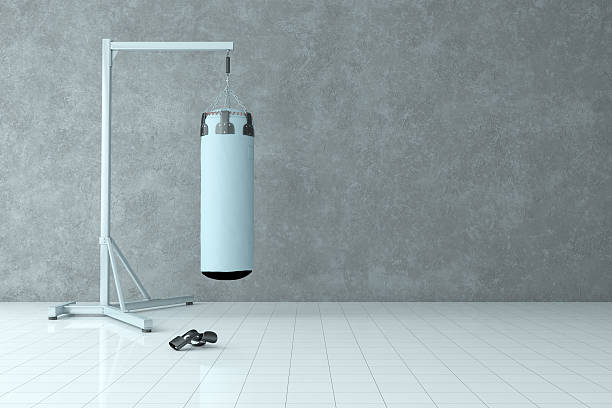
– Considerations for Space Availability in Home or Gym
Before purchasing a punching bag, it’s essential to consider the available space in your home or gym. Measure the area where you plan to install the bag, taking into account both vertical and horizontal space.
Ensure that there is sufficient room for the bag to swing without obstruction and that you have enough clearance to move around comfortably during your workouts.
– Mounting Options and Their Impact on Weight Selection
The mounting options for punching bags can vary, and the choice of mounting affects the weight selection. Here are a few common mounting options:
a. Ceiling Mount:
If you plan to mount the bag from the ceiling, it’s crucial to ensure that the ceiling can support the weight. Heavy bags may require additional support, such as a sturdy ceiling beam or structural reinforcement.
b. Wall Mount
Wall-mounted bags are a space-saving option, but it’s essential to choose a mounting bracket or frame that can support the weight of the bag. Consider the weight capacity specified by the manufacturer to ensure a secure and safe installation.
c. Freestanding:
Freestanding punching bags typically have a base that can be filled with water or sand for stability. The weight of the base contributes to the overall stability of the bag. Choose a weight that provides sufficient stability during your training sessions.
Filling Your Punching Bag: Choosing the Perfect Fill Material
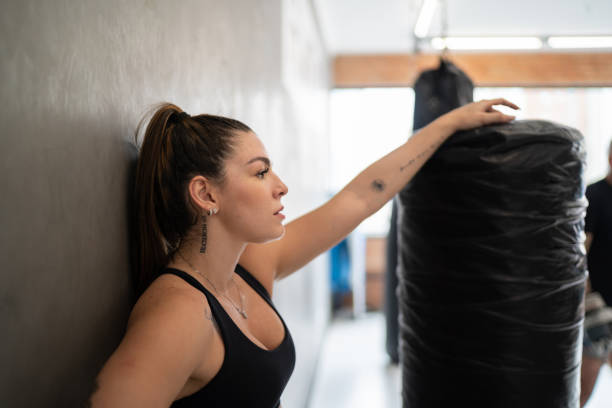
When it comes to filling a punching bag, the material inside plays a crucial role in determining its weight, density, and overall feel.
While the weight of the bag itself is important, what you fill it with can significantly impact your training experience.
Checkout our comprehensive article of punching bags filling called “The Hottest Debate: What to Fill Punching Bags With?” We’ve explored the numerous filling contenders, weighed the merits and demerits, and dived into the science and art behind each option.
However, if you need a little overview, let’s take a sneak peek at some popular options here:
Sand Fill
Sand is a dense and heavy material that offers a more solid resistance when striking the bag. It provides a realistic feel and is favored by experienced fighters and those looking to build strength and power. However, sand can be challenging to distribute evenly and may require additional reinforcement in the bag’s construction.
Cloth Fill
This traditional filling consists of fabric scraps, such as old clothes or rags. It provides a soft and forgiving feel, making it ideal for beginners or individuals who prefer a less dense bag. Cloth fill can be easily adjusted to achieve the desired weight, but it may settle over time and require occasional readjustment.
Fiber Fill
Made of synthetic fibers, such as shredded foam or fiberfill, this type of filling offers a good balance between density and impact absorption. It provides consistent resistance and maintains its shape well over time. Fiber fill is often used in high-quality commercial bags, but it may require periodic fluffing to retain its optimal density
Water Fill
Some specialized bags, like water-filled punching bags, use water as the filling. Water bags offer a unique feel, providing dynamic resistance that simulates the movement of a human body. They are adjustable in weight by adding or removing water, but they require proper sealing to prevent leakage.
FAQs about Punching Bag Weight
“Can I adjust the weight of a punching bag?”
While you cannot directly adjust the weight of a punching bag, you can indirectly alter the weight by adding or removing filler material inside the bag. Many punching bags are filled with materials such as cloth, sand, shredded fabric, or synthetic fibers.
By removing some of these fillers, you can decrease the weight of the bag. Conversely, you can add additional fillers to increase the weight.
However, it’s important to note that modifying the fillers may affect the overall feel and density of the bag, so it’s recommended to consult the manufacturer’s guidelines or seek professional advice before attempting any modifications.
“What if I need a custom weight for a specific training routine?”
If you require a custom weight for a specific training routine, there are a few options to consider:
– Specialty Bags
Some manufacturers offer specialty bags that allow you to adjust the weight by adding or removing separate weight plates or compartments. These bags are designed specifically for customization and can provide flexibility in choosing the desired weight for your training.
– Custom Orders
In certain cases, you may be able to place a custom order with a manufacturer to create a punching bag with a specific weight. This option allows you to tailor the weight to your exact requirements, but it may involve additional costs and longer delivery times.
– External Weights
If you have a sturdy punching bag and require extra weight for a particular routine, you can attach external weights to the bag. These can be in the form of ankle weights, dumbbells, or weighted sandbags. However, ensure that the bag’s construction and mounting method can support the additional weight safely.
The Bottom Line
The weighty curtain has been lifted, revealing the captivating truths behind the punching bag weight dilemma. Thanks to the expertise of our esteemed panel, you are now armed with the knowledge to make the perfect choice for your training journey.
No longer will you be left in the dark, pondering which weight is right for you. With their guidance, you can confidently step into the gym, knowing that each punch you throw will be accompanied by the ideal resistance, whether you seek speed, power, or endurance.
Now, with a twinkle in your eye and the spirit of a champion in your heart, it’s time to seize the ring and leave your mark. Let the punching bag become your canvas, and may your punches paint a masterpiece of strength, skill, and unwavering passion.
So, the dilemma is concluded, and we are ready to make some big knockouts. Until the next time we meet, keep fighting, keep pushing, and keep striving for greatness. The world of boxing awaits your magnificent presence!


Pingback: Can a Punching Bag Really Help You Lose Weight? The Surprising Link Revealed! - Balanced Brawn
Pingback: The Hottest Debate: What to Fill Punching Bags With? - Balanced Brawn